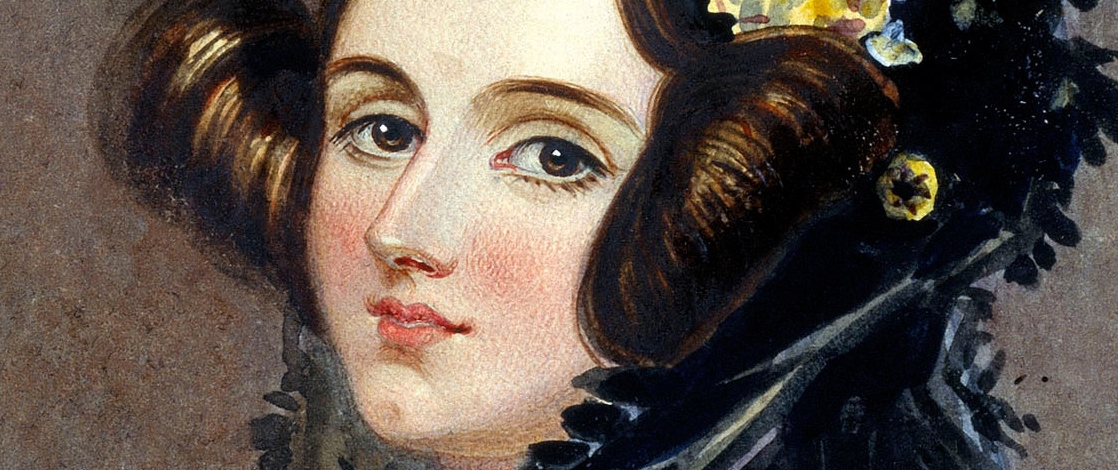“The debate surrounding the theme of Just Transition transpires in all aspects of the COP process, which is and remains a place where governments should work together to find a way forward”. COP28 in Dubai is certainly no exception.
Elena Verdolini, CMCC Senior Scientist, delves into the intricate dimensions of Just Transition, from the origins of the definition to the emergence of the “just twin transitions twins”, navigating the complexities of technology, digitalization, and their role in fostering equitable and sustainable processes. Against the backdrop of the current climate crisis, the relevance and advantages of a Just Transition become evident, addressing both the economic and social dimensions of climate change. And there are few words that summarise better than others the complex intertwining of science, policy-making, economics and human rights: “Deliberate for the good”.
How do you define Just Transition?
This term was coined in the 1980s by American unionists, when the United States was tightening environmental regulations and closing particularly polluting sectors, such as the production of asbestos or chemicals. Just transition in that context was all about regulating the polluting sector whilst thinking about the people that were going to be left without a job and to put in place measures to compensate for this.
In the subsequent thirty years, the term underwent a mutation, a metamorphosis, as it began to be inserted into the broader context of the sustainability and emission reduction debate.
For instance, the European Commission now interprets Just Transition in Europe as a transition where nobody is left behind. So, it goes way beyond workers; we are talking about everybody: we are talking about children, poor communities, and issues such as energy poverty. It is about making sure that the process does not weigh too much on poorer households, on specific workers, or on certain regions more than others.
More recently, we are actually talking about “Just twin transitions”. A first transition is the ecological one, towards renewable energy, circularity and sustainability. A second transition is due to the digital transformation. Pursuing the “Just Twin Transitions” thus indicates the effort to reduce emissions and promote the use of digital technologies for economic well-being, while at the same time not penalizing those people who will bear the heaviest economic consequences of decarbonization costs on one hand, or those who have little access to digital technologies on the other hand.
In the context of the present climate crisis, what is the relevance and the advantages of a just transition?
First of all, I would like to stress that climate change is unjust, as the consequences of a changing climate always fall more on poorer sides of society and on poorer countries.
We start from a situation that it’s already moving, it’s already changing, and it’s costing us money. The most exposed countries are generally the ones who have less capability to adapt or to mitigate. Moreover, within a given country, those who are more exposed to increasing energy prices, are unable to relocate or do not have easy access to air conditioning, for example, are also the poorest families.
Secondly, climate change mitigation is costly, but it is a good economic decision: the costs of climate change are higher than the costs of mitigation. Yet, the cost of mitigating climate change falls unequally on society. Poor countries are more exposed to the effects of climate change, even though they have historically contributed less. So, in a broader sense, the issue of a just transition also touches upon the debate about the funds for loss and damage in the climate negotiations.
A third aspect is acceptability. We have to move very fast if we want to remain below two degrees in order to avoid a drastic rise in climate risks. But, in order to do so, we have to make sure that people believe in the objective of reducing climate change. Therefore, designing a just transition where people are not left behind and feel that they can participate in the decision making, makes it more likely that they will be willing to collaborate and contribute to the mitigation efforts.
When you talk about just transitions, does it mean there are different dimensions to the concept?
Much of the debate around just transition is not within the field of economics, but extends outside of it, in the field of political science and other social sciences.
The first dimension is distributive justice, which is about the distributions of costs and benefits. The second one is participatory justice, which has to do with the process by which you design things, through participation and equality-based policies. The third dimension is restorative justice, which takes into account the injustices and the need to address and rebalance them. And then there is a fourth dimension, which is called recognition justice, which is about who sits at the table, who has the right to participate.
These dimensions include intergenerational equity and what we leave behind for our children in terms of climate change, for instance. It involves groups which are generally left outside of the negotiations, such as indigenous people, women, and marginalized groups more in general. This shows how complex the definition of a just transition is. It’s not just about the money, it’s also about the process. It’s not just about the present, but also about the past and the future.
What’s the link between technologies, digitalisation and just transitions? What’s the role of the digital transformation?
Digitalisation mainly touches the sectors of industry, mobility and buildings.
Digitalisation affects decarbonisation because it has a direct impact on energy demand and energy efficiency. For example, one modern cell phone substitutes many devices we previously had. With one cell phone, you have a phonebook, a map, a compass, a CD player, a video recorder, and so on. And this is actually a lot more efficient: You do things faster, you do things better, and you can potentially save energy.
At the same time, digital devices require energy as an input, because they need to be charged. And so the very direct link between digitisation and climate mitigation is through these two channels, and it’s not clear which one will be the prevailing one.
If the efficiency channel will prevail, then we can do the same things with less energy. But if we have many of these devices then energy demand increases, which will pose a further strain on decarbonisation.
Digitalisation and decarbonisation are also linked to a just transition. For example, digitalisation can have relevant effects on the competitiveness of firms and on jobs that are lost, as digital technologies can be exploited to promote different schemes of economic development, alternative industrial or economic paths. Digitalisation can help provide an alternative to an economy founded on fossil fuels and help develop a service-based society.
Moreover, having access to digital technologies is very empowering, it provides information, coordination, participation channels. The bad side of the story is that, in a world that is becoming more and more digital, those who do not have access to these technologies are left behind, and subjected to the so-called digital divide.
How can you avoid digitalisation leading us to an unjust transition?
When we think about decarbonisation, we need to think more broadly about the process of digitalisation, which is a megatrend that is shaping our societies – it is here and it’s going to stay. If we want to make the twin transitions more just, we have to keep in mind that it will require a lot of governance. If we continue on the current pathway with the current emissions, we will not benefit from digital technologies. For this reason, we would have a negative impact on democracy and political agency, on equity, but also on planetary stability. At the very opposite end, we would have a situation that we call “green but inhumane“, where we harness the potential of digital technologies to the full extent, controlling citizens, forbidding things, etc. It could be very efficient, we could save the planet but at the same time negatively impact equity and democracy or political agency.
The challenge is to find something that is in between, and we call it “deliberate for the good“, where we try to harness the potential of digital technologies in the context of decarbonisation to improve democracy and political agency, promote equity and planetary stability. So, we need to focus on the regulation of the processes, on the framing, on channeling these forces in the right direction.
Who are the main actors in this process, and what are their relationships?
We have scientists, and we have institutions. CMCC is involved in many European projects at the moment. For example, the 2D4D project, funded through a European Research Council grant, has a very strong science-policy interface. Within the SEME division we are involved in projects focusing on circularity, in which digitalisation is considered the cross-cutting theme. Moreover, the Adjust project was specifically awarded to generate just transition pathways for the EU.
Therefore, an obvious connection is in the fact that institutions such as the European Union are providing funds to study these processes and scientists are asked to report back to them. I think that the missing link right now is that there should be a table where policymakers sit together not only with scientists, but also with industry players. The key is to bring together not only those who study the processes and the people who have to regulate them, but also the people who have to bear the regulations.
Collaborating with industries and firms is actually complicated because you need to develop a common language, which can take years. The problem is that the debate is very fragmented and it is often hard to provide a fil rouge that gets everybody around the table to speak the same language. Lastly, a crucial role is played by journalists and the media, who should spur scientifically-based debates on the topic with more frequency.
What is the relevance, in your opinion, of the “Just Transition” theme in the COP28? What are the crucial aspects?
Referring back to the different dimensions of justice, distributive, participatory, restorative and recognition, it is clear that the theme of Just Transition is – and has been – a crucial one at COP. As we move forward, this is even more true. Conferences of the Parties to the UNFCCC are the place where all these aspects are discussed, in one way or the other. Take, for instance, the fund on loss and damages, it clearly is a matter of restorative justice. Emissions targets are an aspect of distributive justice. The global stocktake process is an example of participatory justice. The presence at COP of civil society and different interest groups, including the most marginalized, is a clear reference to recognition justice principles. In sum, the debate surrounding the theme of Just Transition transpires in all aspects of the COP process, which is and remains a place where governments should work together to find a way forward. The one hope we all should have is that they succeed in doing so with high ambition, as any further delays will increase climate risks and associated costs.
Are you optimistic about the progress towards a just transition? What are some of the main challenges and future steps?
From the latest IPCC report it emerged that there have been, over time, a lot more efforts from the bottom-up. For instance, participatory processes for reducing emissions, decisions by cities to have net zero plans and similar things. I think this is actually a very positive sign because it shows that things do not work solely from the top-down any more; there are very successful bottom-up solutions as well.
The negative news is that we are not fast enough. Whether we will be able to make sufficient progress to avoid disaster will depend on our ability to govern this process. I think that the tassels are all there. I don’t think we will necessarily be able to remain below two degrees, but the policies that we have put in place so far have already significantly reduced the potential high increase in temperature.
I do hope that technology will help us, even though I don’t think that technology alone will do it. I really take this role of educating people and showing them alternative ways of doing things very seriously. I think we need to be very careful in raising new generations in the right way, because they will have a lot of work to do. They will have to clean up a lot of our mess. I cannot say I’m an optimist, I cannot say I’m a pessimist. I cross my fingers, do my part, and hope that somehow we will be able to join together and head in the right direction.
More information:






